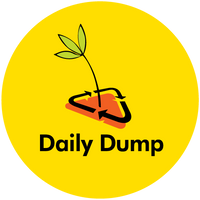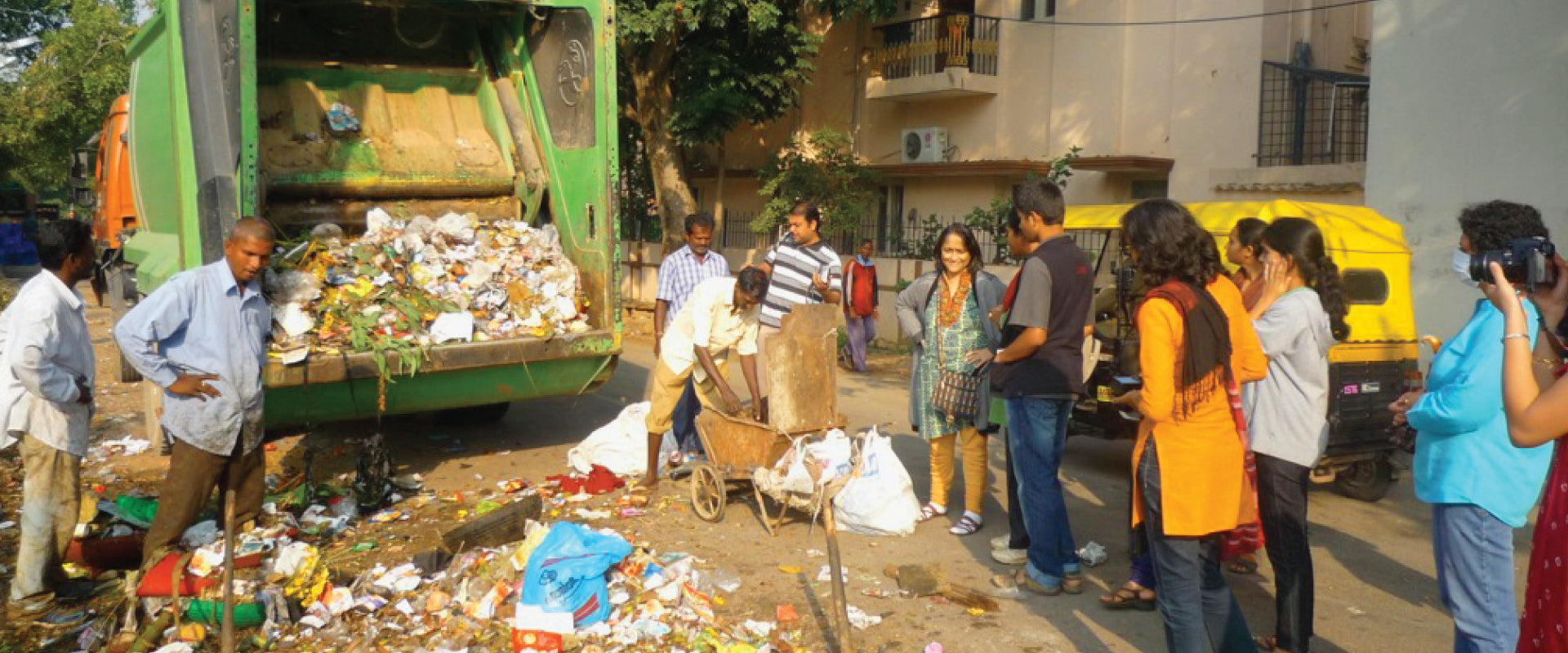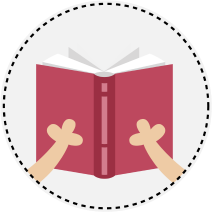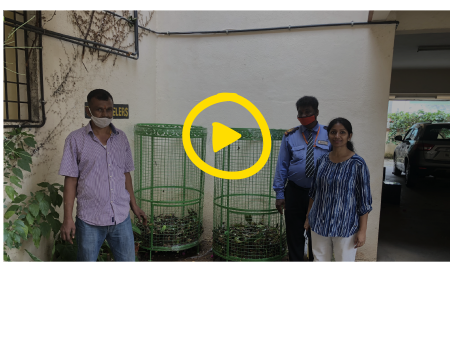Everyday choices, toxic chemicals and health...

Poonam's personal battle with health and toxic chemicals...
What we don’t see hurts us!
As my husband and I set up our own home many many years ago, we bought new gadgets, new products and tried out new home and personal care products like so many other young couples. It was a fun, adventurous time and full of energy and newness.
Little did we think that all our choices and decisions would ever bring us harm – we thought we were educated enough and relied on our decisions as we created a new life and world for ourselves.
Then I got Lupus when I was 38. The doctors mentioned toxicity and pollutants as possible triggers to this onset of Lupus. I remember thinking – “How can that be?” I was really befuddled.
I believed that I lived a reasonably hygienic life, I ran a clean home, I cleaned my clothes and kept my surrounding clean, I used branded ingredients for cooking and bought well-made gadgets for my home and family. So how could pollution and toxicity affect me.
I suddenly felt naïve, I felt I betrayed, I had never taken a stand of being suspicious of everything. I was uncomfortable with the idea of “trust no brand”, ‘trust no company” “trust nothing” approach to living. I wanted some stability in my world so I trusted the folks who made the stuff I bought and felt they would only sell me safe and healthy products. Now, this was being put to doubt.
Also, I grew up thinking of myself as a solid person, impervious of the going on’s of the outside world. My mental model of myself was of a solid skin protecting me from the things outside. I had a notion that there was this very hard rigid separation between my inside world and the world outside. So, I was safe as long as I looked after this surface and my world.
With this new health issue, this idea of my body as armored and solid took a beating. I suspect a lot of us in my generation have this idea of themselves in relationship to this living world. Even now I sense that most folks see themselves are solid independent beings.
So, two things happened, I felt I had to doubt the effects of the stuff I used daily, and I had to unlearn the mental models of how I related personally to the world.
This event set me off on the journey of figuring out what pollution and toxicity really mean for someone like me, an ordinary person in my daily life.
I spent a substantial bit of time researching and reading round the notion of pollutants, our health, toxicity and the history of this unseen wave that is now having huge impact on our own health and the health of our home – earth.
My learnings
I would like to distill my learning into three key points.
Learning 1
The first belief I had to unlearn was – we are not solid beings, we are not made of steel, we are porous, weirdly absorbant and constantly interacting with the environment in ways that are automatic and outside our realm of awareness. It’s like exchange without our permission.
Learning 2
The second main idea is that we still do not know enough of the synergistic effects of all the man-made stuff we have put out there.
Since most pollutants are invisible and toxicity crawls and spreads and builds over time, it’s not something that is foregrounded for our urgent attention.
And yes, we are in a very toxic world and especially in our country the issue is going to be really big one in the coming 10 years. Think of more and more urban demand for products, gadgets, services, utilities and housing – all generators of toxins.
Learning 3
Toxins are everywhere, historical toxins that have not gone away, toxins that we are currently generating and toxins we buy into without second thought because they have become the norm – like in our personal care products, our paint, our pillows, our food.
In the work I do with compost, I have heard of stories of people planting home gardens without knowing that there was residual lead from old paint in that patch. This leads to vegetables and fruits that will bio-accumulate this toxin.
Learning 4
I now believe that, the more informed ordinary citizens are, about toxicity, the more we can push for change, because change is not going to come from policy alone. There is too much vested interest and not enough motivation to change from business. It needs us to demand better, genuinely safer and more transparent product labelling.
How did we get here – to such a bad place?
Not intentionally! History reveals that often our good intentions and apparent successes turn out to have deadly negative impacts.
I am sharing two story examples that are helpful in understanding the kinds of conditions that contributed to getting us here.
The first story is of DDT
Dichlorodiphenyltrichloroethane, commonly known as DDT, is a colorless, tasteless, and almost odorless crystalline chemical compound, an organochlorine. Originally developed as an insecticide, it was first synthesized in 1874 by the Austrian chemist Othmar Zeidler.
It began being used to control and provide relief against the epidemic of typus and malaria during World War II. In fact there are some historians that estimate that “During WWII more people have supposed to have died of Typhus than combat caused by lice”.
Paul Muller won the Nobel Prize in 1948 for his work showing DDT’s benefits to public health and DDT was used by Governments all around the world to tackle malaria and pests in agriculture. It was adopted as a home and farm pesticide and the ads promoted it as a completely safe product going so far having the image of a babies face with the text that urges you to use DDT as a way to keep your family safe from disease.
Historians say that some folks did have concerns about this chemical, but it was only in 1962 when Rachel Carson in her book “The Silent Spring” spotlighted the negative impact of DDT and industrial fertilizers, did the world begin to sit up and notice.
The second story
While Rachel Carson was bringing attention to the ravages we were beginning to cause on our environment in the US, the second story begins with what was happening on the coasts of Sweden observed by ordinary Swedish and Nordic Fisher folks.
In the early 1920’s as the world moved to electrify our built environments there was a need for cheap and abundant insulation materials and PCB’s (polychlorinated biphenyls) a range of industrial chemicals, were seen as the ideal solution leading to millions of tons of this being installed. The huge toxic cost to us collectively for this decision was only realised 40 years later.
Around 1966, fishermen in the Baltics started noticing that seals, birds, whales, fish, sharks showed symptoms of disease, leading to infertility, deformed larvae and shrinkage in sizes of populations. They reported these observations and scientists investigated to discover something that was not established firmly till then - the co-relationship between the leaked PCBs and health of sea life.
The other important factor they uncovered was that the leaked PCB’s reaching the seas are absorbed by plankton (porous bodies remember). Since PCB’s don’t readily break down, they move up the food chain when plankton are eaten by fish, here again they do not break down, and they move up into our bodies as we eat fish. All through the route they cause problems for their hosts.
This characteristic of this chemical to resist degradation through chemical, biological and photolytic processes was then observed in other chemicals. This group have earned a special name and are now called the Persistant Organic Pollutions – also known as “forever chemicals” or “POP’s”.
The deadly effect of these toxins is that it is deposited in our fatty tissues and can cause a range of health problems from effects on the immune system, reproductive system, nervous system, endocrine system.
The DDT story and PCB story took time for the world to notice, by then we had accepted and institutionalized and invested in the extraction, production and manufacture and distribution of chemicals on a mass scale.
This lesson from history that innovation in one phase may turn to disaster in another is not new or undebated. There are many points of view, personally I feel that checking facts, looking for systems connections and thinking in terms of 100 years can bring more clarity to decision making.
If you are interested in the DDT story, I would recommend Pandora’s Lab - Seven Stories of Science Gone Wrong and of course the fight against DDT and other POP’s on this forum The Stockholm Convention for POP’s. India still produces DDT and while many states have stopped using it, we continue to grapple with whether it is to be used in context or banned altogether.
What changed for me
My personal battle with health and the understanding that chemicals have adverse effects has made me shift drastically to organic, natural and I actively seek out non-toxic alternatives.
But I know how challenging it can be to know the finer print of toxicity when one has a busy and full life, the most frustrating bit is that it is hard to be suspicious of the world that is cleverly tugging at our purse strings with tantalising offers and really mesmerising possibilities.
So I broke down the five big aspects of toxicity to wrap my head around it.
Remember toxins and pollution are:
-
Invisible – so you have to remind yourself that you are porous.
-
Mobile – it moves through air, water, soil, us and other species.
-
Persistent – it can endure for much longer than our individual life spans.
-
Bio accumulative (builds up in one the body of one organism) and therefore if this organism is eaten by others, it bio-magnifies as it moves up the food chain.
-
Vulnerable children, women, low income families and marginalised communities are more likely to be exposed to toxicity – this facet is often most overlooked.
I made this my heuristic to help me foreground toxicity in my daily awareness.
I keep reminding myself of these four big aspects so when I see something, I do an automatic check against these in my head.
I have over the years also done the following:
Found safer alternatives for my products used at home, personal care, home care, food, clothes and products.
Learnt more about the connection between toxicity, convenience, globalisation and power. It almost seems our systems favour extraction over regeneration so our short termism kicks in as a justification.
Reduced my need to follow trends or “latest” cool fads and worked to find my own understanding of what makes more sense.
Bought more from local safe brands that may also work with livelihood generation efforts.
It is a journey.
The Good News
The COVID crisis has given pause to our rush to do business as usual. The last 20 years has seen many organisations working to bring toxicity to the forefront of government and business attention. In our own country we have great examples. Citizen groups and small businesses all over have begun addressing this issue in innovative ways and big businesses are taking note.
I find that once you get started, you find your own way around. Start with becoming familiar with the names of the top toxic chemicals. Roll their names in your mouth, I still can’t pronounce most of them, make a list, put that up on your board and find out fun stuff about each.
This would be a great activity for you and your family, and it will make you familiar with the actors in the toxic drama.
If you would like to make toxic cubes for your family as a game, send me a email on hello@dailydump.org.
We have products like the Ooze Stopper, Clean Dish Kit and the Segregation Stand that help you begin keeping toxins in check and also learn about them as you do so. In addition, we help you understand the issues surrounding chemicals in personal care and cleaning products.
My follow up article will be on why and how you can get hooked to a safe toothpaste. Keep in touch.
Daily Dump drives individual action by uncovering the hidden connections of our daily choices.
Never tried composting at home? See how simple it is!
Poonam Bir Kasturi
Oct 2020








